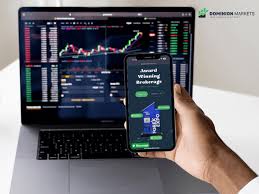Beginner’s Guide to Forex Trading 1692844579

Beginner’s Guide to Forex Trading
Forex trading, or foreign exchange trading, is one of the most popular financial market activities worldwide. This beginner’s guide will walk you through the essentials of Forex trading, covering vital concepts, strategies, and tips you need to get started. If you are eager to enter the world of currency trading, you will find this information immensely helpful. In this context, it’s also beneficial to look for reliable resources, such as beginner forex trading Trading Brokers in Vietnam, to help you on your trading journey.
Understanding Forex Trading
Forex trading involves buying and selling currencies with the goal of turning a profit. Currencies are traded in pairs, like EUR/USD or USD/JPY, meaning you’re simultaneously buying one currency while selling another. The Forex market operates 24 hours a day, five days a week, providing flexibility for traders around the globe.
The Basics of Currency Pairs
Each currency pair consists of a base currency and a quote currency. The base currency is the first one listed in the pair, and the quote currency is the second. The price tells you how much of the quote currency is needed to purchase one unit of the base currency. For example, if the EUR/USD pair is 1.20, it means that 1 Euro is equivalent to 1.20 US Dollars.
Types of Forex Market Participants
There are several types of participants in the Forex market, including:
- Central Banks: They influence currency values by adjusting interest rates and engaging in open market operations.
- Commercial Banks: Large banks execute a significant amount of Forex transactions for clients and for their own trading.
- Institutional Investors: Hedge funds and mutual funds also participate in Forex trading to diversify their portfolios.
- Retail Traders: Individual investors who trade through online platforms, representing the largest percentage of the trading volume in the Forex market.
How to Get Started with Forex Trading
Starting your Forex trading journey can be simplified into several key steps:
1. Educate Yourself
Understanding the market, terminology, and trading strategies is crucial. There are numerous online resources, webinars, and courses that can provide valuable insights.

2. Choose a Reliable Forex Broker
Your broker serves as the intermediary for your trades. Look for a broker with a good reputation, low spreads, and a user-friendly trading platform. Make sure to check for security and regulatory compliance.
3. Open a Trading Account
Once you choose a broker, you’ll need to open a trading account. Most brokers offer various account types, including demo accounts that allow you to practice without risking real money.
4. Develop a Trading Plan
Your trading plan should outline your trading goals, risk tolerance, and strategies. Sticking to a plan is essential for success in trading, especially during challenging market conditions.
5. Start Trading with a Demo Account
Utilize a demo account to practice trading without any financial risk. This will help you familiarize yourself with the trading platform, explore different strategies, and build your confidence.
6. Begin Trading with Real Money
When you’re comfortable and have established a strategy with your demo account, consider starting with a small amount of real money. This approach allows you to adjust your strategies and get a feel for the emotional aspects of trading.
Key Forex Trading Strategies
There are numerous strategies traders use to analyze the market and make trades, including:
1. Fundamental Analysis

This involves analyzing economic indicators, news events, and political developments that impact currency values.
2. Technical Analysis
This method uses historical price charts and various indicators to predict future price movements based on past behavior.
3. Price Action Trading
Traders who use price action rely on the price movements themselves rather than indicators. This strategy focuses on analyzing price patterns and behavioral signals in the market.
Risk Management in Forex Trading
One of the most challenging yet crucial aspects of Forex trading is managing risk. It is vital to ensure that your potential losses are limited. Here are some practices to consider:
- Use Stop-Loss Orders: This tool helps prevent excessive losses by automatically closing your positions at a predetermined price.
- Determine Your Risk-Reward Ratio: Before entering a trade, calculate what you stand to gain versus what you could lose.
- Maintain a Trading Journal: Keeping a record of your trades helps you analyze your performance and refine your strategy over time.
Emotional Discipline in Trading
Forex trading can be emotionally taxing. FOMO (fear of missing out), overtrading, and reacting to market fluctuations are common pitfalls. Developing a disciplined mindset is crucial for success:
- Recognize and manage your emotions.
- Stick to your trading plan and strategies.
- Avoid chasing losses; instead, take a break if you’re feeling overwhelmed.
Conclusion
Forex trading presents exciting opportunities, but it also comes with significant risks. As a beginner, investing time in education and developing a solid trading plan are essential steps towards success. Remember to practice with a demo account, manage your risks carefully, and maintain emotional discipline as you navigate the Forex market. The road may be challenging, but with patience and commitment, you can make it a lucrative part of your financial journey.